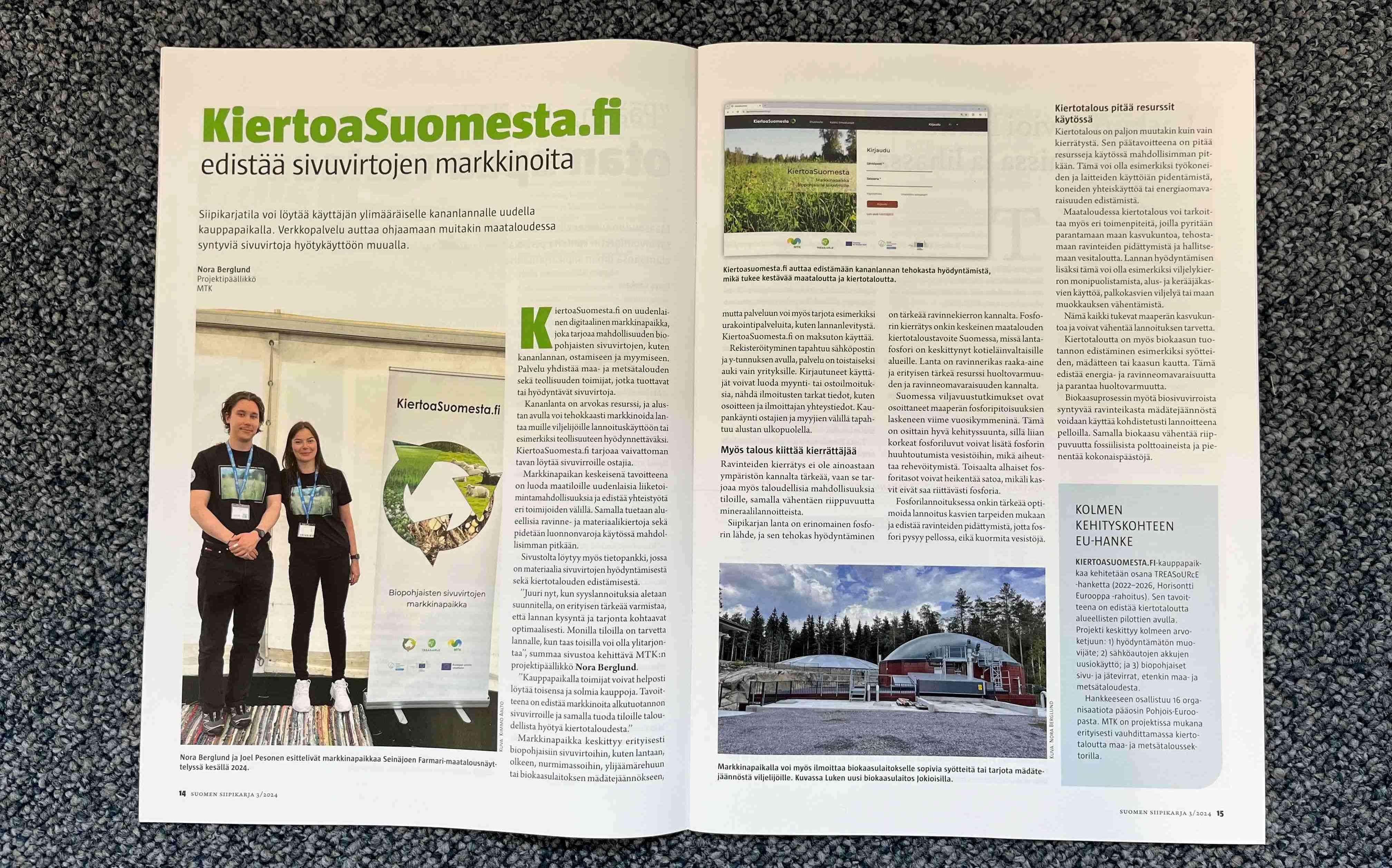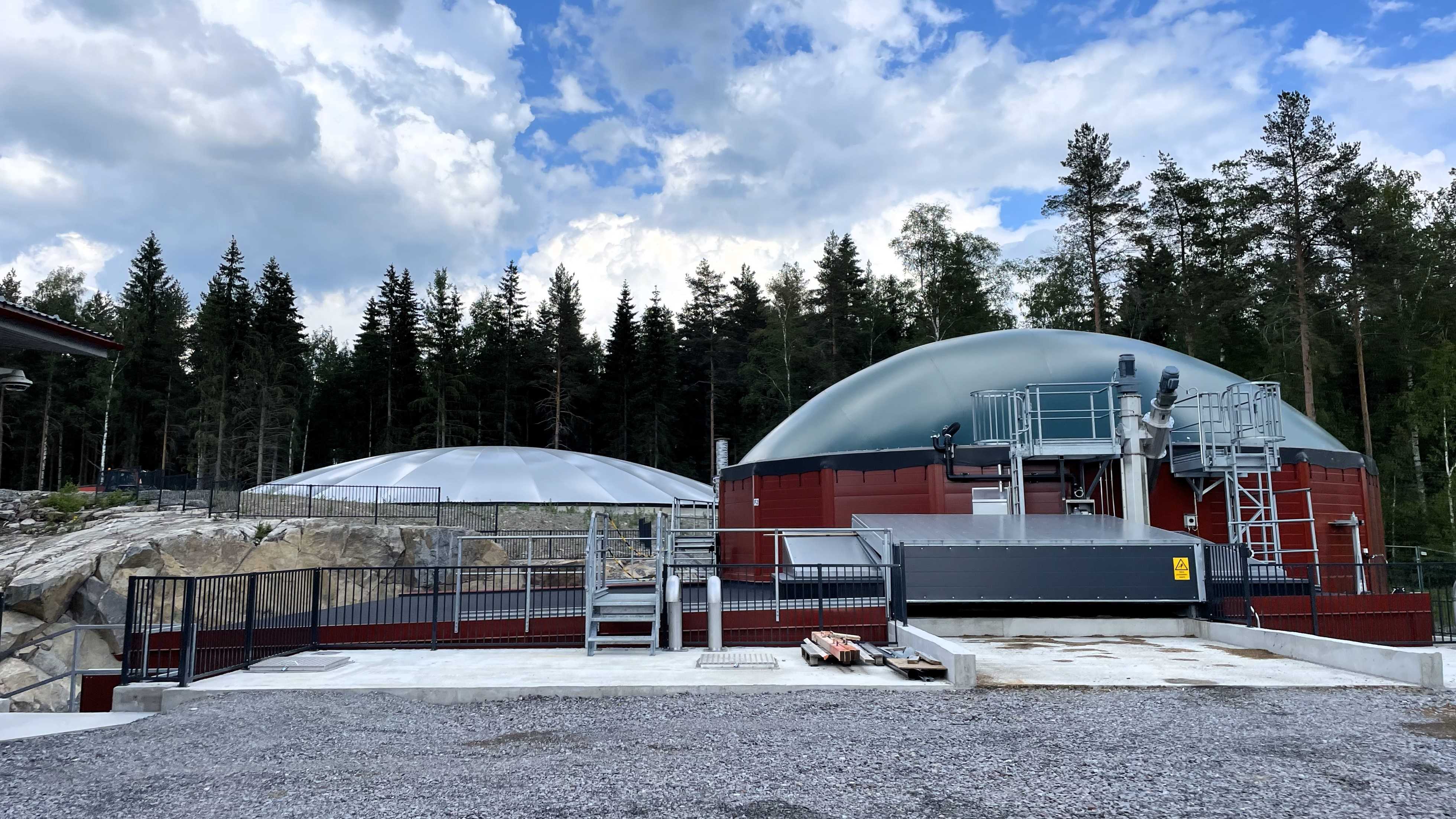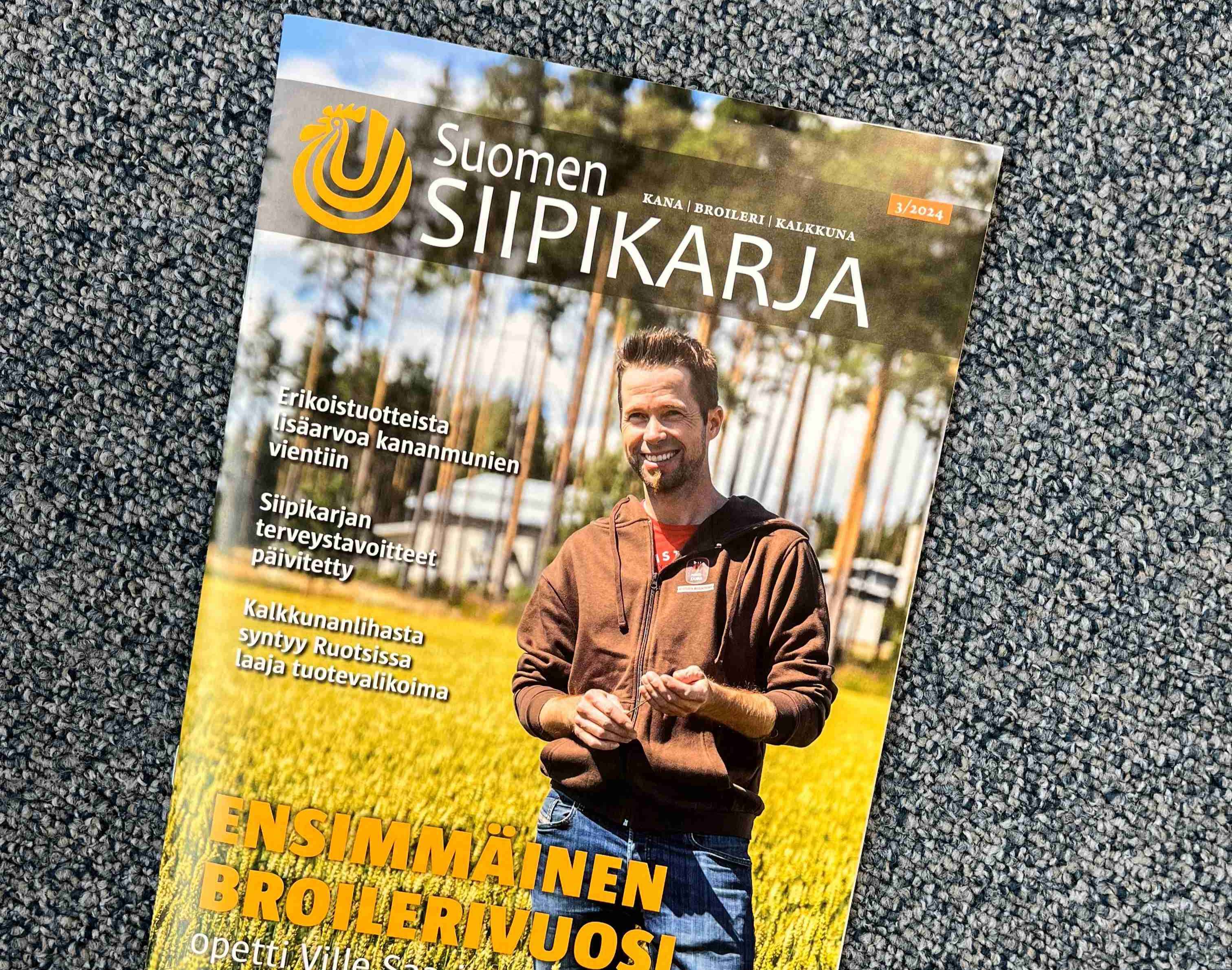Marketplace for chicken manure – KiertoaSuomesta.fi
KiertoaSuomesta.fi is a digital marketplace that offers the opportunity to buy and sell bio-based side streams such as chicken manure. The service connects operators in agriculture, forestry and industry who produce or use side streams.
Chicken manure is a valuable resource and the platform can be used to effectively market manure to other farmers for fertilization or to the processing industry. KiertoaSuomesta.fi offers an easy way to find buyers for side streams. The platform helps to promote the efficient use of chicken manure.
The main objective of the marketplace is to create new business opportunities for farms and to promote cooperation between different actors. At the same time, regional nutrient and material cycles are supported and natural resources are kept in use for longer.

Market development for biobased side streams
Now, as autumn fertilizations are being planned, it is particularly important to ensure an optimal match between supply and demand for manure. Many farms are in a need for manure, while others may have an oversupply. In the marketplace, operators can easily find each other and make deals.
The aim is to promote market development for biobased side streams and at the same time to bring economic benefits to farms. The marketplace focuses in particular on biobased side streams such as manure, grass biomass, surplus feed or digestate from biogas plants, but also contracting services can be offered, such as manure spreading.
Phosphorus recycling and manure recovery
Poultry manure is an excellent source of phosphorus and its efficient use is important for nutrient cycling. Phosphorus recycling is a key objective of the agricultural circular economy in Finland, where manure phosphorus is concentrated in livestock-intensive areas. Manure is a nutrient-rich raw material and a particularly important resource for security of supply and nutrient self-sufficiency.
In Finland, soil fertility studies have shown a decline in soil phosphorus levels in recent decades. This is partly a positive trend, as too high phosphorus levels can increase leaching of phosphorus into water bodies, causing eutrophication. On the other hand, low phosphorus levels can reduce yields if plants do not receive sufficient phosphorus.
”In phosphorus fertilization, it is important to optimize fertilization according to the plants’ needs and promote nutrient retention so that phosphorus stays in the field and does not pollute water bodies.”
Not only is nutrient recycling important for the environment, it also provides economic opportunities for farms, while reducing dependence on mineral fertilizers.
Circular economy – more than recycling
The circular economy is much more than just recycling, its main objective is to keep resources in use for as long as possible. This can be, for example, extending the life of machinery and equipment, sharing machinery or promoting energy independence.
In agriculture, the circular economy can mean a wide range of measures to improve soil condition, enhance nutrient retention and water management. In addition to manure management, this can also include diversification of crop rotation, the use of catch crops, leguminous crops, reduced tillage, all of which contribute to soil condition, and can reduce the need for fertilization.

Promoting biogas production through feedstock, digestate or gas, for example, is part of the circular economy, which contributes to energy and nutrient self-sufficiency and improves security of supply.
Through the biogas process, the nutrient-rich digestate from the biobased side streams can be used as fertilizer for targeted use on fields. At the same time, biogas reduces dependence on fossil fuels and lowers overall emissions.

The article was published in the Siipikarja magazine published by the Finnish Poultry Association in September 2024.